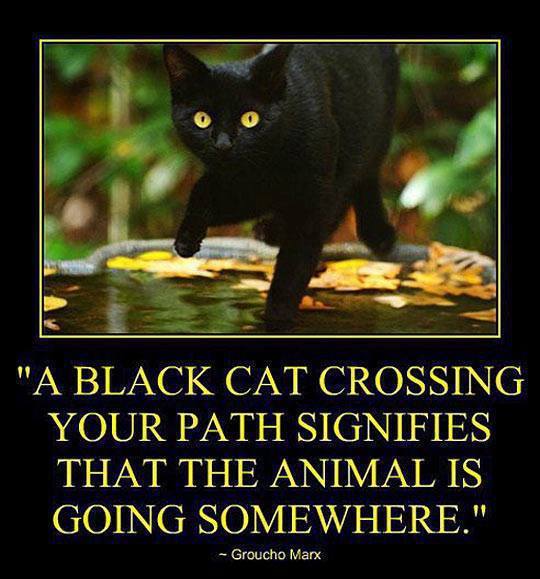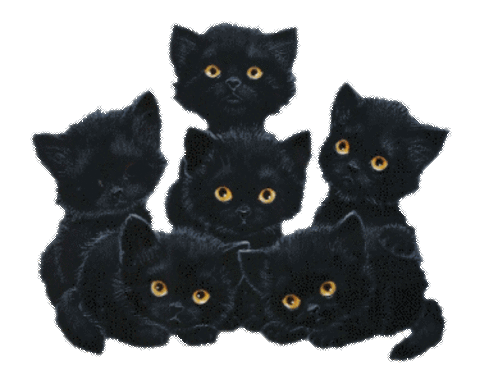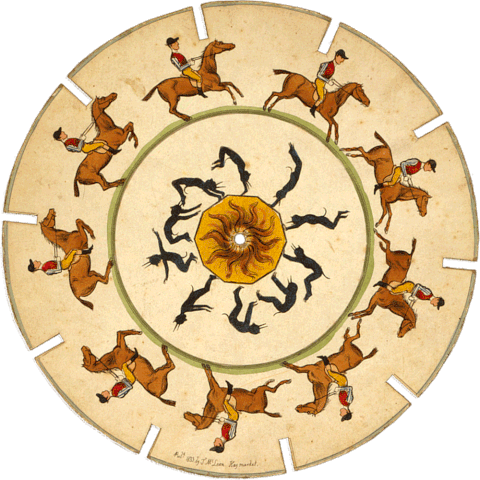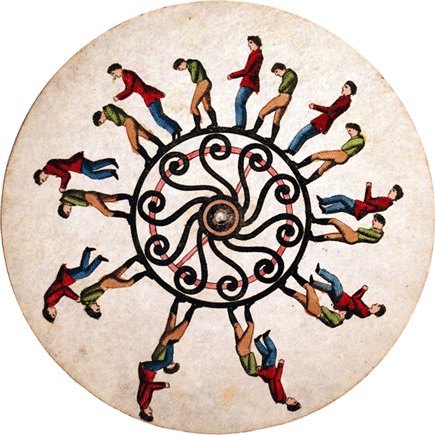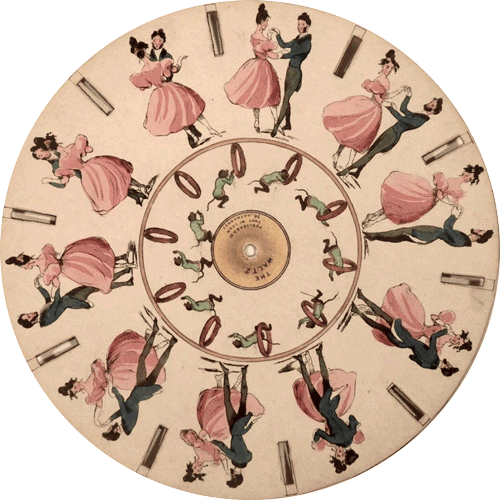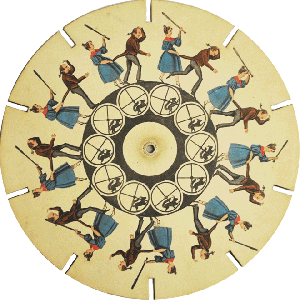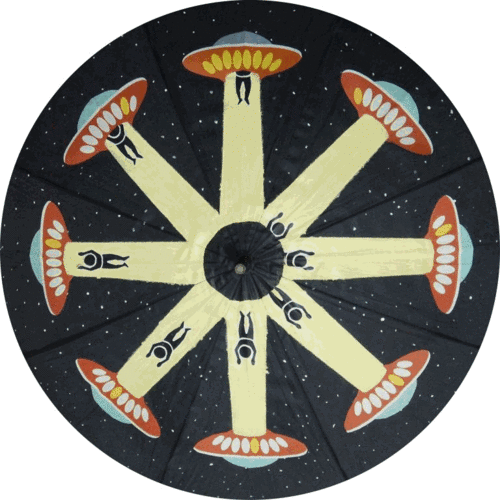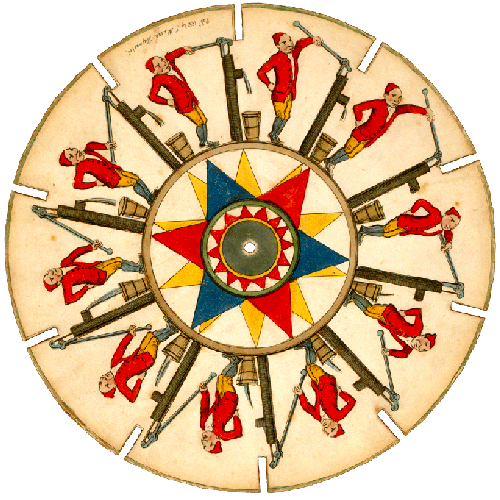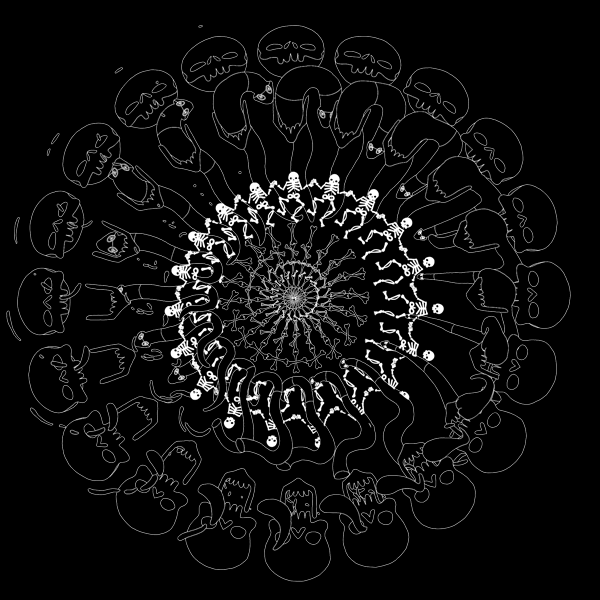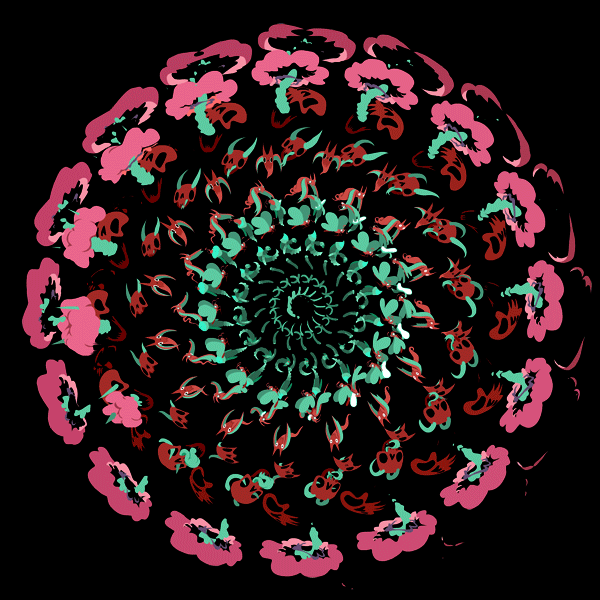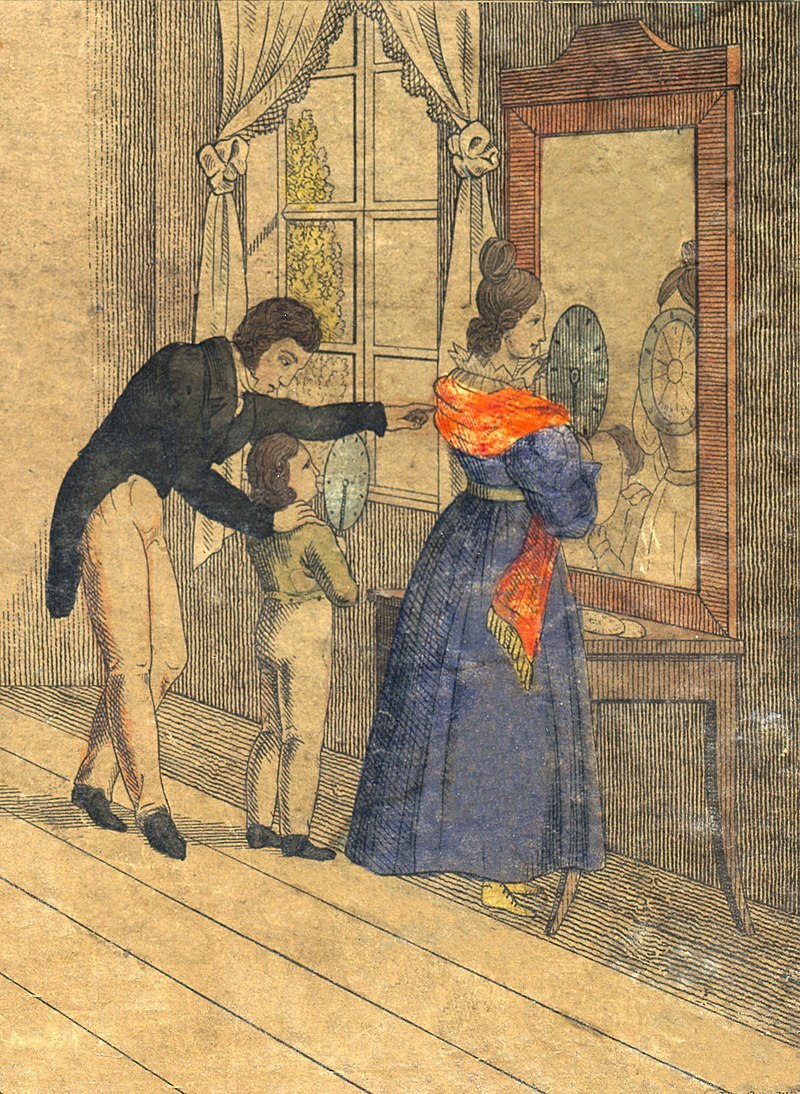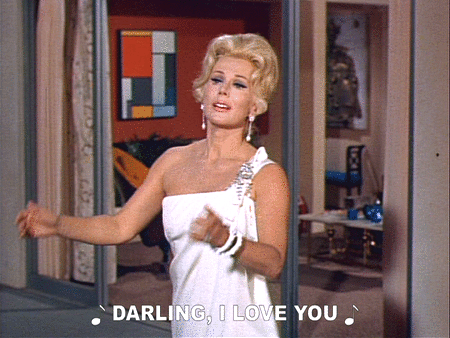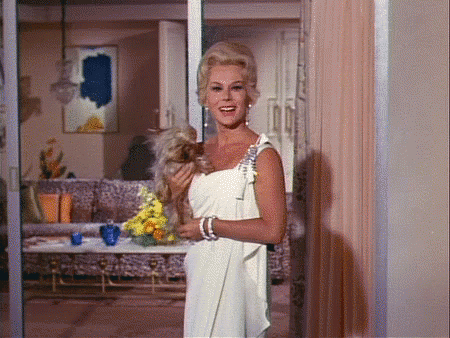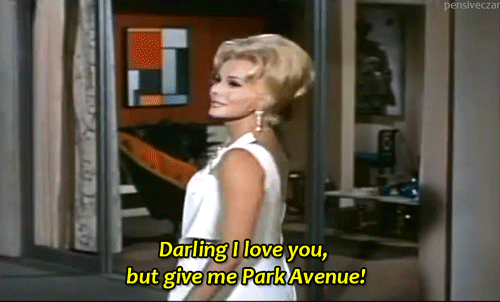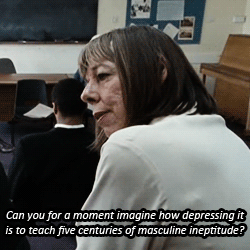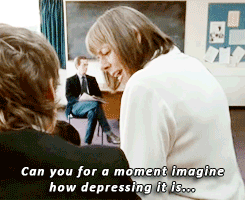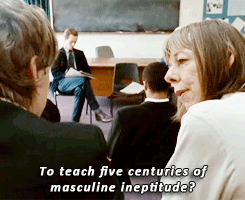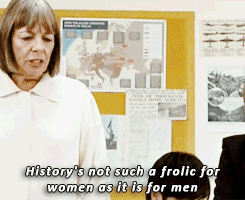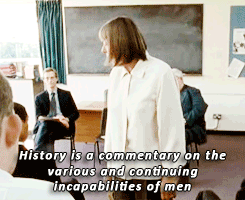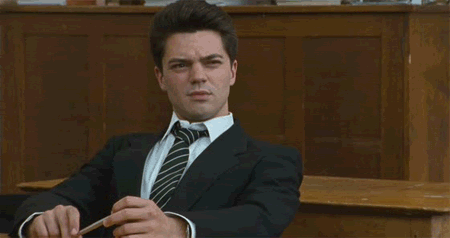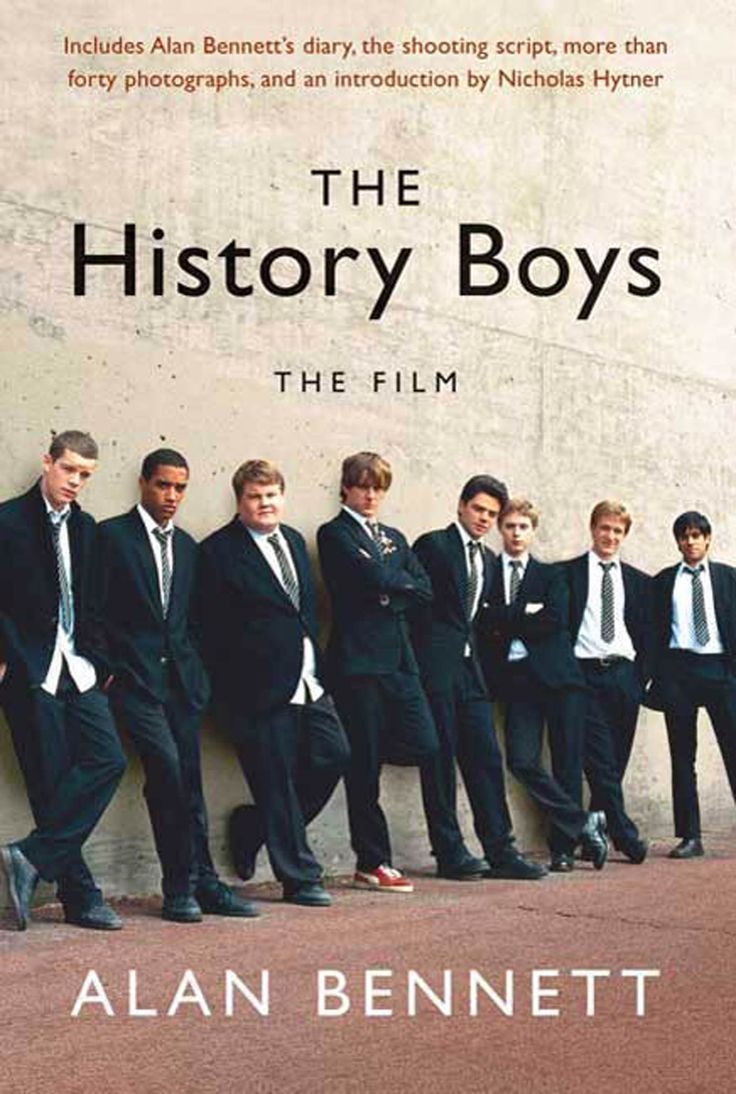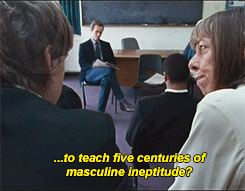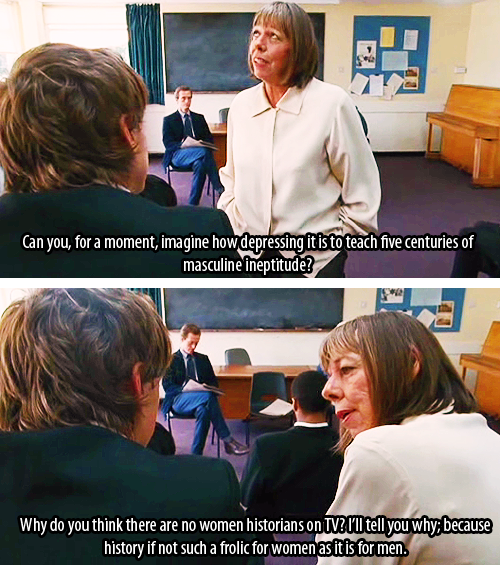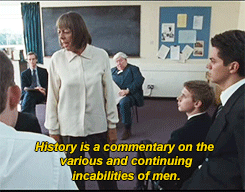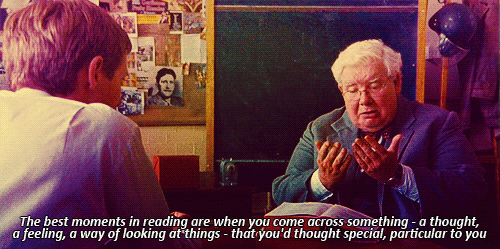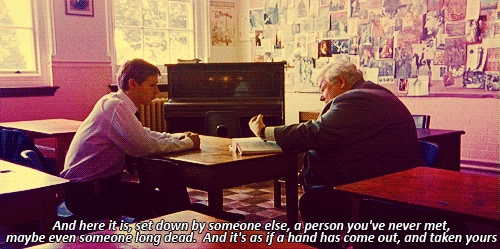Phénakisticope
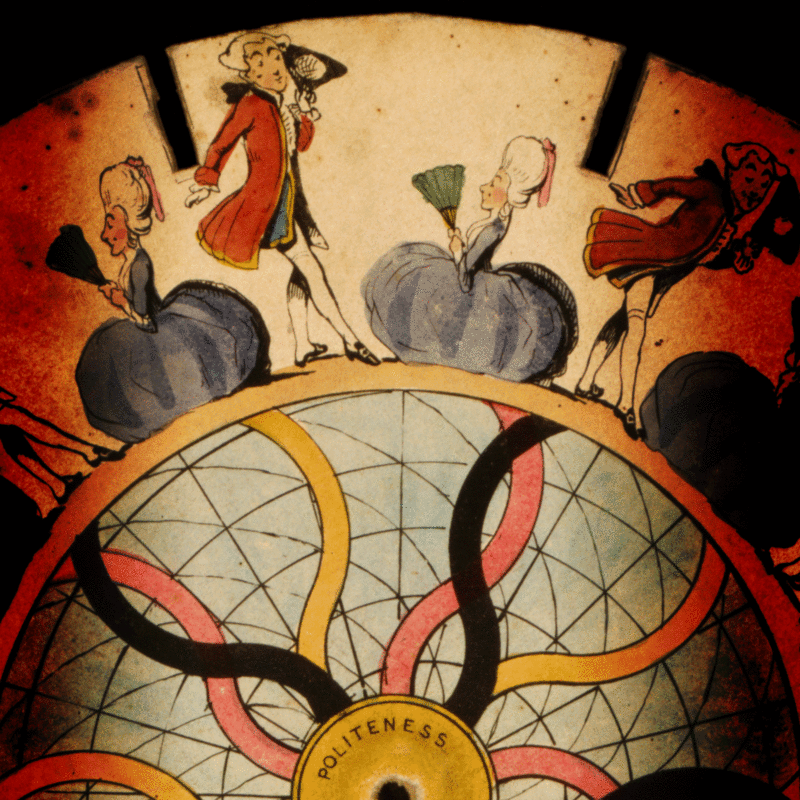
The phénakisticope (better known as phenakistiscope or the later misspelling phenakistoscope) was the first widespread animation
device that created a fluid illusion of motion. The phenakistiscope is
regarded as one of the first forms of moving media entertainment that
paved the way for the future motion picture and film industry.
It is sometimes compared to GIF animation since both show a short continuous loop.
HOW DID THE PHENAKISTOSCOPE WORK?
Still images were drawn onto a disc and each image was slightly different, in the same way images are drawn on the pages of a flip book.
This disc was attached to another that had slits cut around it and both were attached to an axis in the center.
The disc with the images on was held in front of a mirror and was spun around this axis. When looked at in the mirror, the images appeared to move in circles.
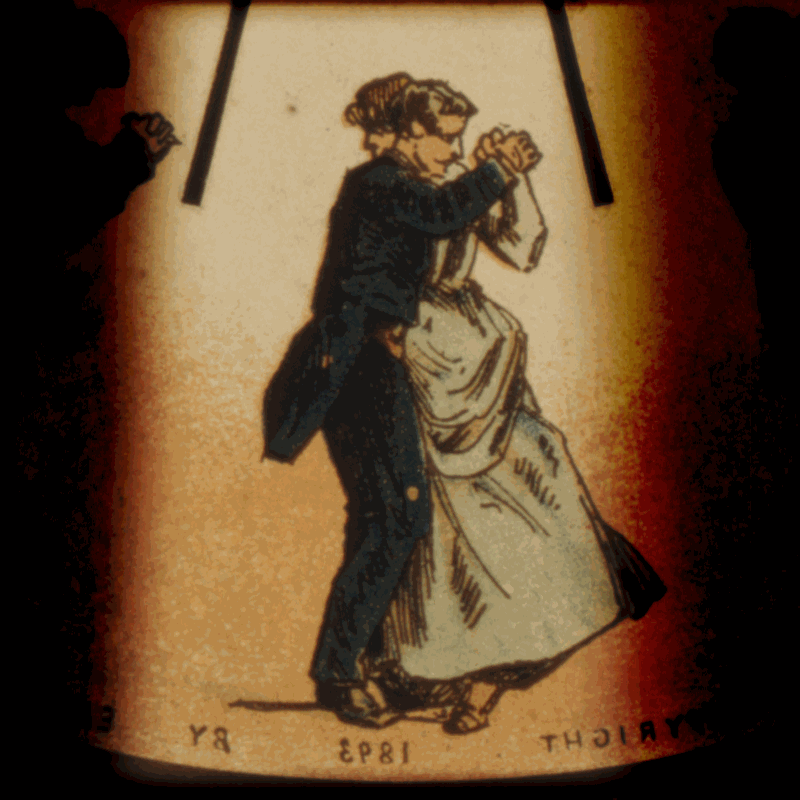 Re-animation from a paper zoopraxiscope disc
Re-animation from a paper zoopraxiscope disc
Invention
The phenakisticope was invented almost simultaneously around December 1832 by the Belgian physicist Joseph Plateau and the Austrian professor of practical geometry Simon Stampfer.
As a university student Plateau noticed in some early experiments that
when looking from a small distance at two concentric cogwheels which
turned fast in opposite directions, it produced the optical illusion of a
motionless wheel. He later read Peter Mark Roget's 1824 article Explanation of an optical deception in the appearance of the spokes of a wheel when seen through vertical apertures which addressed the same illusion. Plateau decided to investigate the phenomenon further and later published his findings in Correspondance Mathématique et Physique in 1828. In a letter to the same scientific periodical dated December 5, 1829 he presented his (still nameless) Anorthoscope,
a disc that turns an anamorphic picture into a normal picture when it is spun fast and seen through the four radial slits of a counter-rotating black disc. This invention was later marketed, for instance by Newton & Co in London.
Etymology and spelling
The term 'phénakisticope' was explained in its introduction article in Le Figaro in June 1833 to be from the root Greek word 'phenakisticos' (or rather φενακίζειν - phenakizein), meaning "to deceive" or "to cheat", and ὄψ - óps, meaning "eye" or "face", so it was probably intended as a transliteration of 'optical deception' or 'optical illusion'.
The term phénakisticope was probably first used by the French company Alphonse Giroux et Compagnie in their application for an import license (29 May 1833) and this name was used on their box sets. Fellow Parisian publisher Junin also used the term 'phenakisticope' (both with and without the accent).
Inventor Joseph Plateau
did not give a name for the device when he first published about it in
January 1833, but used 'phénakisticope' later that year in another
article to refer to the published versions he was not involved with. By
then, he had an authorized set published first as Phantasmascope and later as Fantascope.
In writings and presentations Plateau used both the terms phénakisticope and fantascope, seemingly using phénakisticope as the better known name and fantascope as a preferred name.
The spelling 'phenakistiscope' was possibly introduced by
lithographers Forrester & Nichol in collaboration with optician John
Dunn; they used the title "The Phenakistiscope, or, Magic Disc" for
their box sets, as advertised in September 1833.
The corrupted part 'scope' was understood to be derived from Greek
'skopos', meaning "aim", "target", "object of attention" or "watcher",
"one who watches" and was quite common in the naming of optical devices
(e.g. Telescope, Microscope, Kaleidoscope, Fantascope, Bioscope).
Technology
The
phénakisticope usually comes in the form of a spinning cardboard disc
attached vertically to a handle. Arrayed radially around the disc's
center are a series of pictures showing sequential phases of the
animation. Small rectangular apertures are spaced evenly around the rim
of the disc. The user would spin the disc and look through the moving
slits at the images reflected in a mirror. The scanning of the slits
across the reflected images keeps them from simply blurring together, so
that the user can see a rapid succession of images that appear to be a
single moving picture.
When there is the same number of images as slots, the images will
animate in a fixed position, but will not drift across the disc. Fewer
images than slots, and the images will drift in the opposite direction
to that of the spinning disc. More images than slots, and the images
will drift in the same direction as the spinning disc.
Unlike the zoetrope and other successors, common versions of the phénakisticope could only practically be viewed by one person at a time.
The pictures of the phénakisticope became distorted when spun fast
enough to produce the illusion of movement; they appeared a bit slimmer
and were slightly curved. Sometimes animators drew an opposite
distortion in their pictures to compensate this. However, most
animations were not intended to give a realistic representation and the
distortion isn't very obvious in cartoonish pictures.
The distortion and the flicker caused by the rotating slits are not
seen in most phénakisticope animations now found online (for instance
the GIF animation on this page). These are usually animations created
with software. These do not replicate the actual viewing experience of a
phénakisticope, but they can present the work of the animators in an
optimized fashion. Some miscalculated modern re-animations also have the
slits rotating (which would appear motionless when viewed through an
actual phénakisticope) and the figures moving across the discs where
they were supposed to stand still (or standing still when they were
supposed to move around).
Most commercially produced discs are lithographic
prints that were colored by hand, but also multi-color lithography and
other printing techniques have been used by some manufacturers.
Commercial production
According to Mathias Trentsensky, of art dealer and publishing
company Trentsensky & Vieweg, Stampfer had prepared six double sided
discs as early as February 1833 and had repeatedly demonstrated these
to many friends. In April 1833 Trentsensky applied for an Austrian
patent (k.k. Privilegium) together with Stampfer, which was granted on 7
May 1833. A first edition of four double-sided discs was soon
published, but it sold out within four weeks and left them unable to
ship orders. These discs probably had round holes as illustrated in an 1868 article and a 1922 reconstruction by William Day,
but no original copies are known to still exist. Trentsensky &
Vieweg published an improved and expanded set of eight double-sided
discs with vertical slits in July 1833. English editions were published
not much later with James Black and Joseph Myers & Co. A total of 28
different disc designs have been credited to Professor Stampfer.
Joseph Plateau never patented his invention, but he did design his
own set of six discs for Ackermann & Co in London. These were
published in July 1833 as Phantasmascope and later as Fantascope. Ackermann & Co soon published two more sets of six discs each, one designed by Thomas Talbot Bury and one by Thomas Mann Baynes.
In the meantime some other publishers had apparently been inspired by
the first edition of Professor Stampfer's Stroboscopische Scheiben:
Alphonse Giroux et Compagnie applied for a French import license on 28
May 1833 for 'Le Phénakisticope' and were granted one on 5 August 1833.
They had a first set of 12 single sided discs available before the end
of June 1833. Before the end of December 1833 they released two more sets.
Variations
Many versions of the phénakisticope used smaller illustrated uncut cardboard discs that had to be placed on a larger slotted disc. A common variant had the illustrated disc on one end of a brass axis and the slotted disc on the other end; this was slightly more unwieldy but needed no mirror and was claimed to produce clearer images.
Projection
The first known plan for a Phénakisticope projector with a transparent disc was made by Englishman T.W. Naylor in 1843 in the Mechanical's Magazine - Volume 38.
His letter was illustrated with a detailed side view of the device.
Naylor suggested tracing the pictures of available phenakisticopes onto
glass with transparent paint and painting the rest black. Nothing else
is known of Naylor or his machine.
Franz von Uchatius
possibly read about Naylor's idea in German or Austrian technical
journals and started to develop his own version around 1851. Instrument
maker Wenzel Prokesch made a first model for him which could only
project images of a few inches in diameter. A more successful second
model by Prokesch had a stationary disc with transparent pictures with a
separate lens for each picture focused on the same spot on a screen. A
limelight revolved rapidly behind the disc to project the sequential
images one by one in succession. This model was demonstrated to the Austrian Academy of Sciences
in 1853. Prokesch marketed the machine and sold one to magician Ludwig
Döbler who used it in his shows that also included other magic lantern
techniques, like dissolving views.
From around 1853 until the 1890s J. Duboscq in Paris marketed
different models of a projection phénakisticope. It had a glass disc
with a diameter of 34 centimeters for the pictures and a separate disc
with four lenses. The discs rotated at different speeds.
An "Optical Instrument" was patented in the U.S. in 1869 by O.B.
Brown, using a phenakistiscope-like disc with a technique very close to
the later cinematograph; with Maltese Cross motion; a star-wheel and pin
being used for intermittent motion, and a two-sector shutter.
Scientific use
The
phénakisticope was invented through scientific research into optical
illusions and published as such, but soon the device was marketed very
successfully as an entertaining novelty toy. After the novelty wore off
it became mostly regarded as a toy for children, but it still proved to
be a useful demonstration tool for some scientists.
The Czech physiologist Jan Purkyně used his version, called Phorolyt, in lectures since 1837. In 1861 one of the subjects he illustrated was the beating of a heart.
German physicist Johann Heinrich Jakob Müller
published a set of 8 discs depicting several wave motions (waves of
sound, air, water, etcetera) with J.V. Albert in Frankfurt in 1846.
The famous English pioneer of photographic motion studies Eadweard Muybridge
built a phenakisticope projector for which he had his photographs
rendered as contours on glass discs. The results were not always very
scientific; he often edited his photographic sequences for aesthetic
reasons and for the glass discs he sometimes even reworked images from
multiple photographs into new combinations. An entertaining example is
the sequence of a man somersaulting over a bull chased by a dog.
For only one disc he chose a photographic representation; the sequence
of a running horse skeleton, which was probably to detailed to be
painted on glass. This disc was most likely the very first time a stop motion
technique was successfully applied. Muybridge first called his
apparatus Zoogyroscope, but soon settled on the name Zoöpraxiscope. He
used it in countless lectures on human and animal locomotion between
1880 and 1895.
20th and 21st centuries
The Joseph Plateau Award, a trophy resembling a phénakisticope, was a Belgian movie award given yearly between 1985 and 2006.
Several vinyl music releases have phénakistiscope-like animations on
the labels or on the vinyl itself. In 1956 Red Raven Movie Records
started a series of 78 RPM 8" singles with animations to be viewed with a
device with small mirrors similar to a praxinoscope
to be placed on the center of the disc. Since 2010 audio-visual duo
Sculpture has released several picture discs with very elaborate
animations to be viewed under a stroboscope
flashing exactly 25 times per second or filmed with a video camera
shooting progressively at a very high shutter speed with a frame rate of
25fps.
Phénakisticope
Phénakistiscope
Read the Entire info here:
Phénakisticope English:
Phénakistiscope Français:
Illustration animée
Les animations ci-dessous sont meilleures que dans la réalité car les animations GIF sont constituées d'une série d'images fixes alors que dans le phénakistiscope, le disque est en mouvement et l'image vue à travers la fente subit un léger flou cinétique.
Autres précurseurs du cinéma
Le zootrope et le praxinoscope utilisent le même principe d'animation cyclique, mais étant mécaniquement différents ils peuvent être visionnés à plusieurs :
- le zootrope de William George Horner est un tambour tournant avec fentes datant de 1834 (il ne nécessite plus de miroir)
- le praxinoscope d'Émile Reynaud, de 1877,
est un tambour sans fentes comportant en son centre un cylindre à
facettes de miroirs. Il fonctionne sans obturation et permet une
meilleure perception des mouvements. Il est le premier appareil de ce
type disposant d'un brevet.
Liens externes
A woman viewing an animation in a mirror through the slits of a stroboscopic disc (detail of an illustration by E. Schule on the box label for Magic Disk - Disques Magiques, circa 1833)
